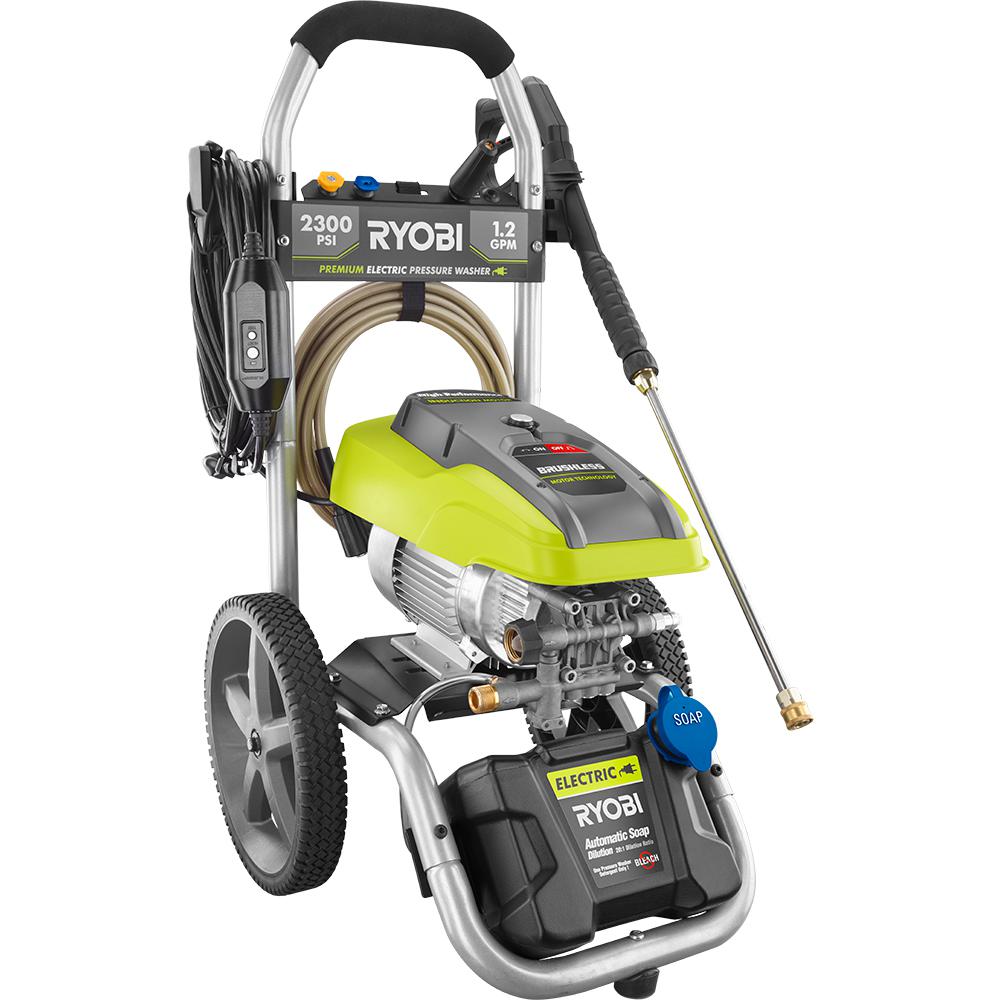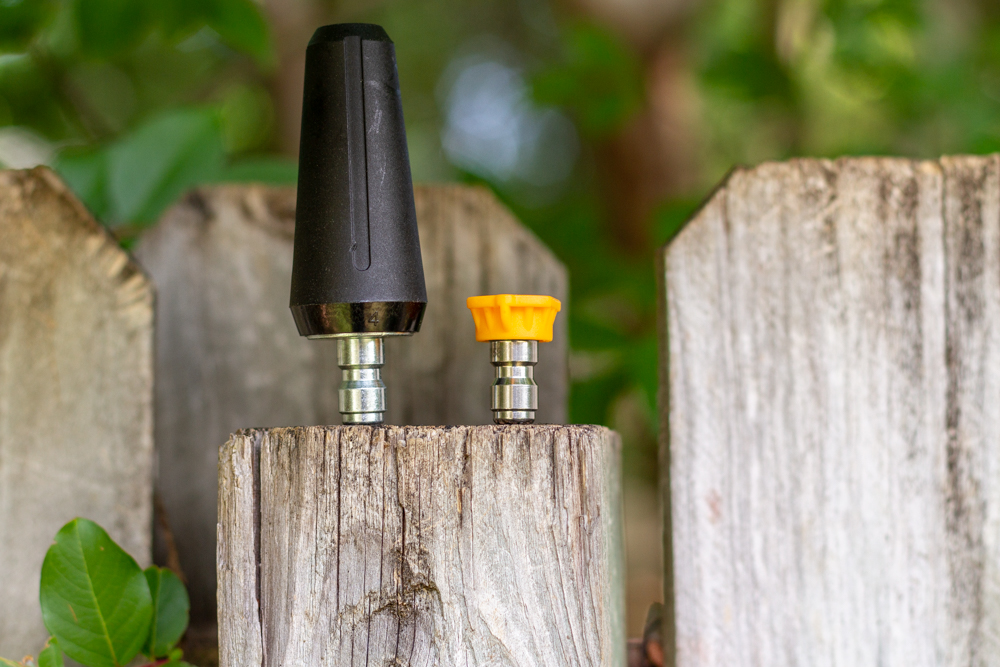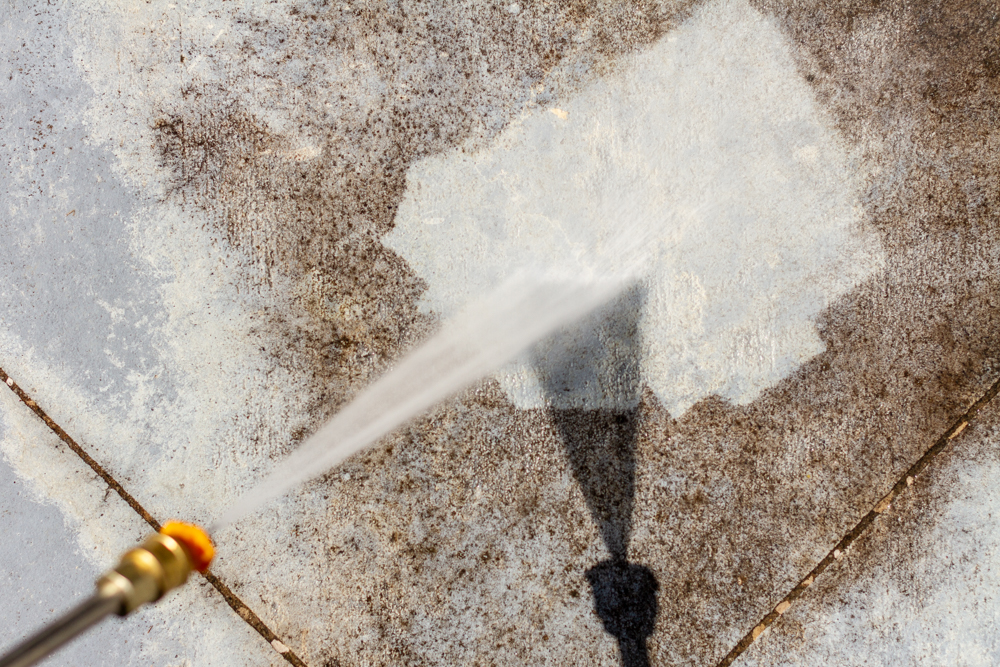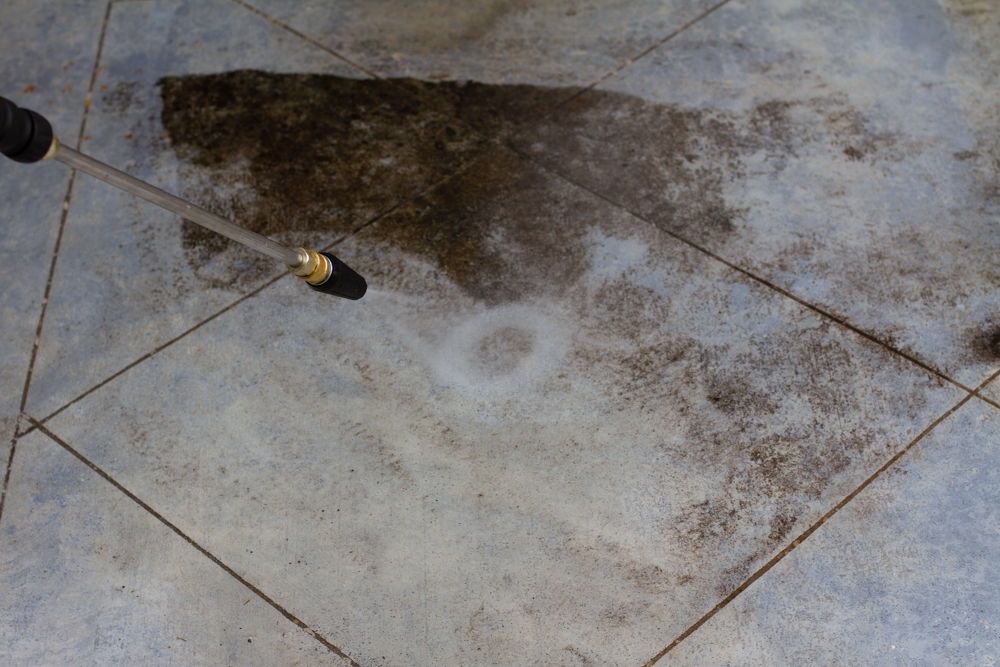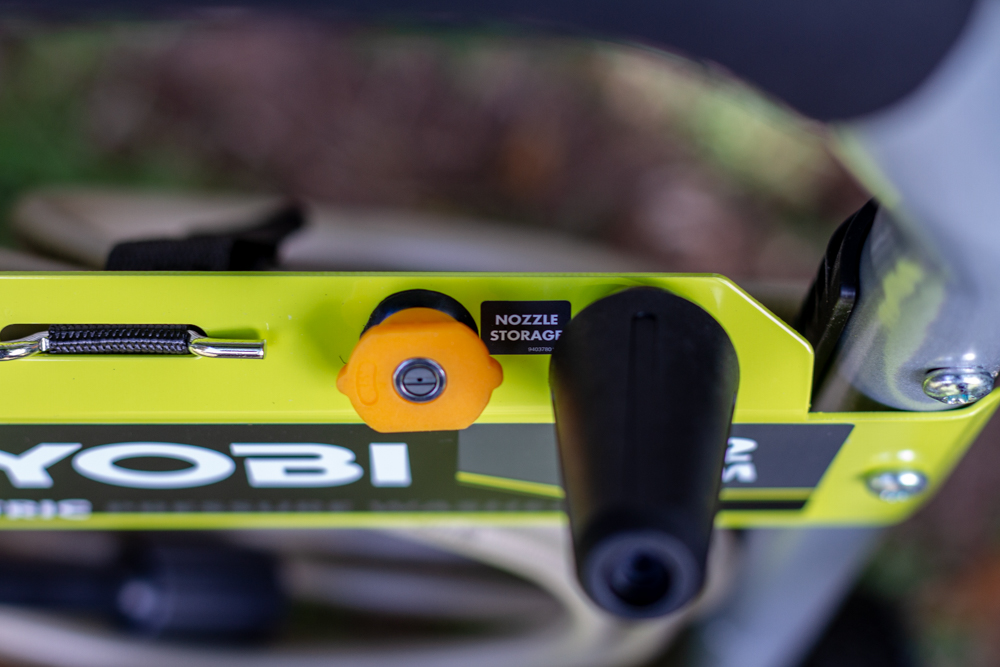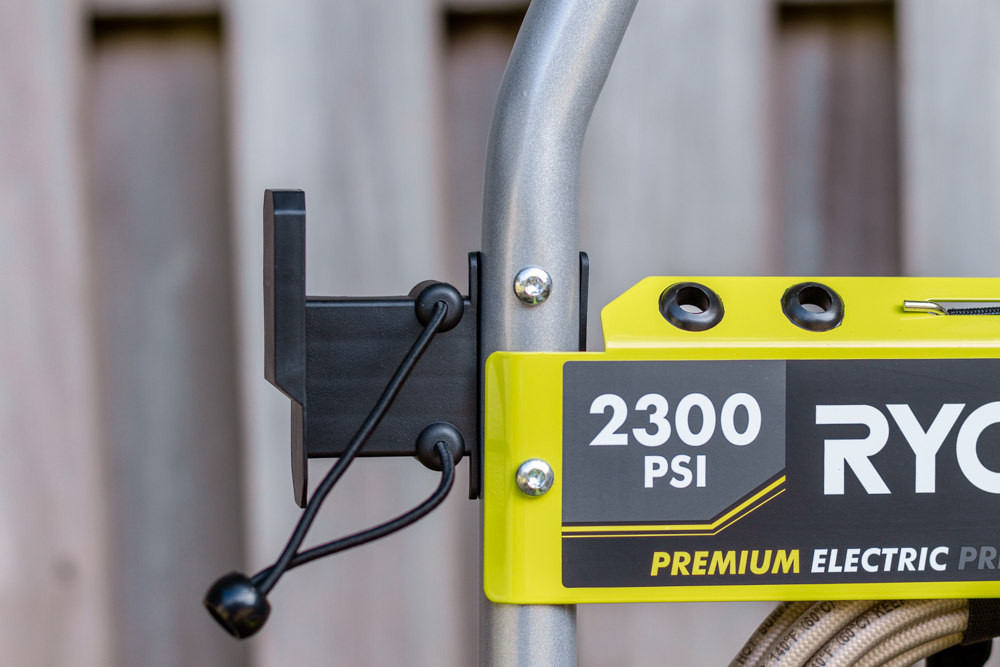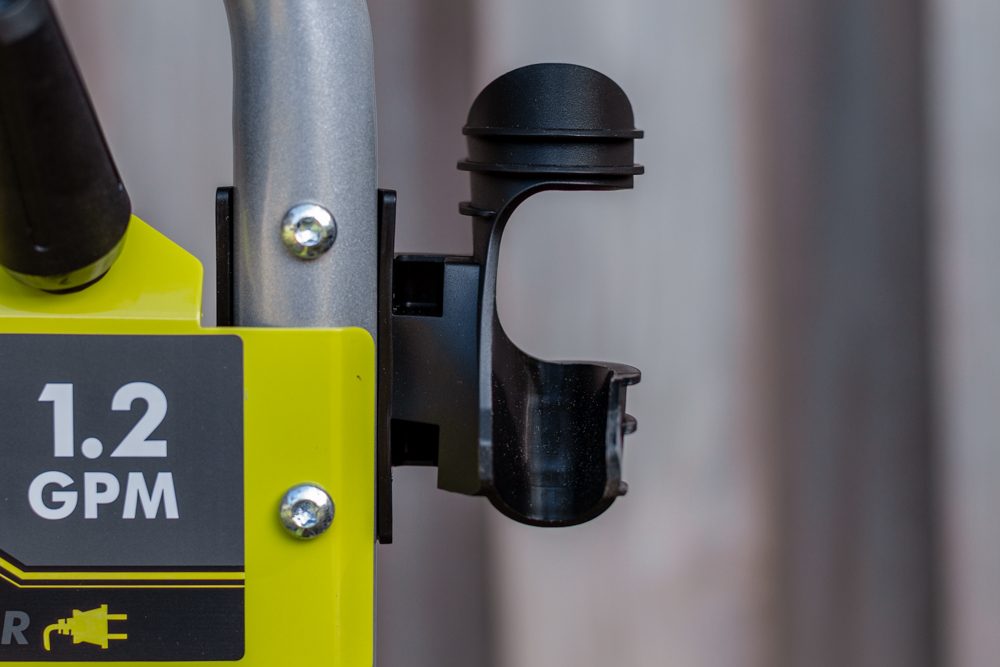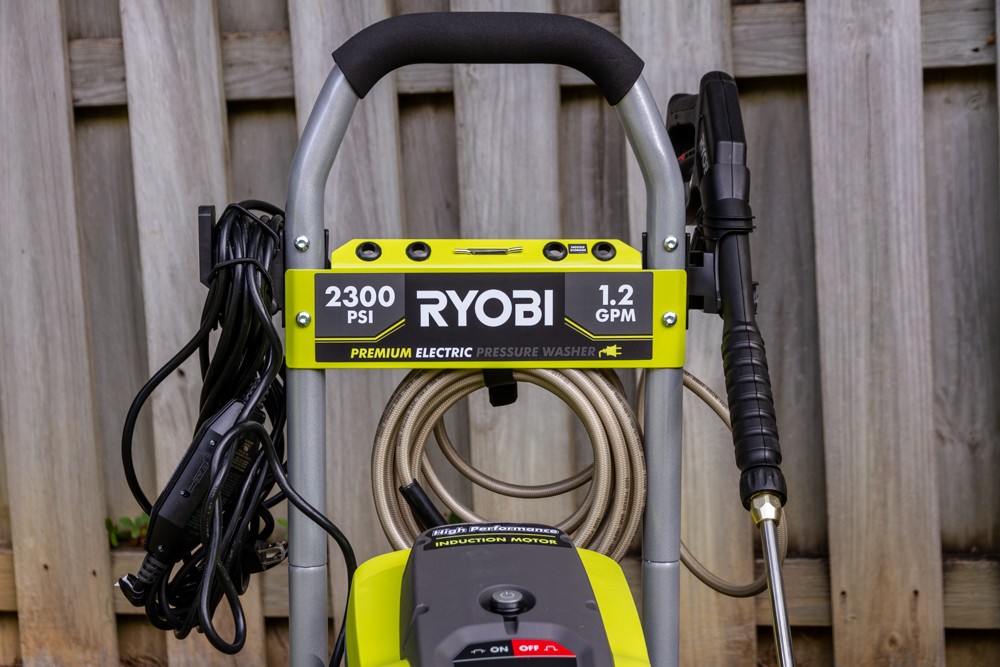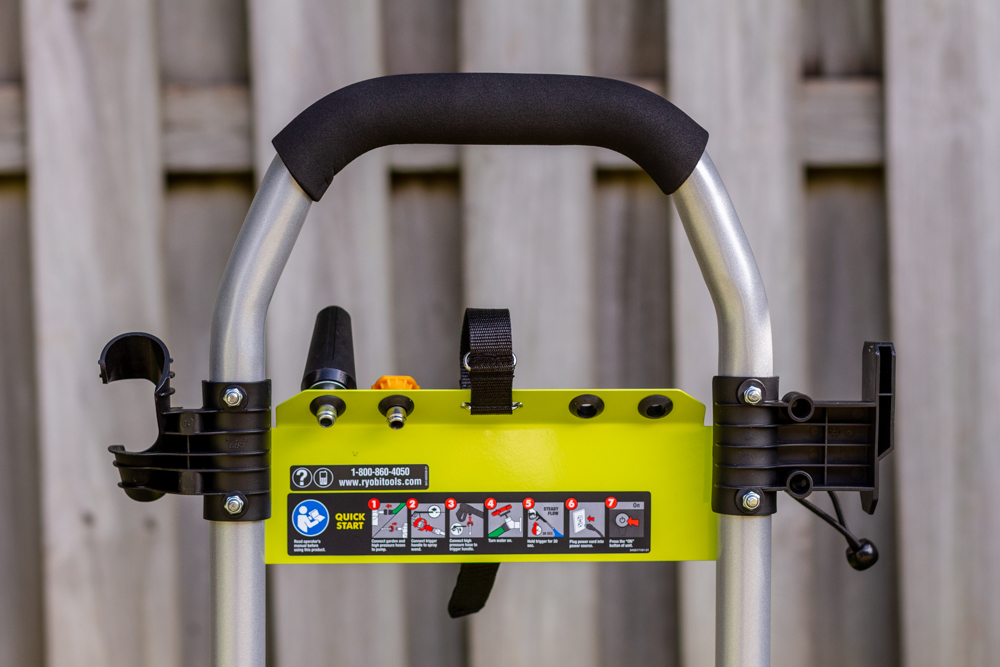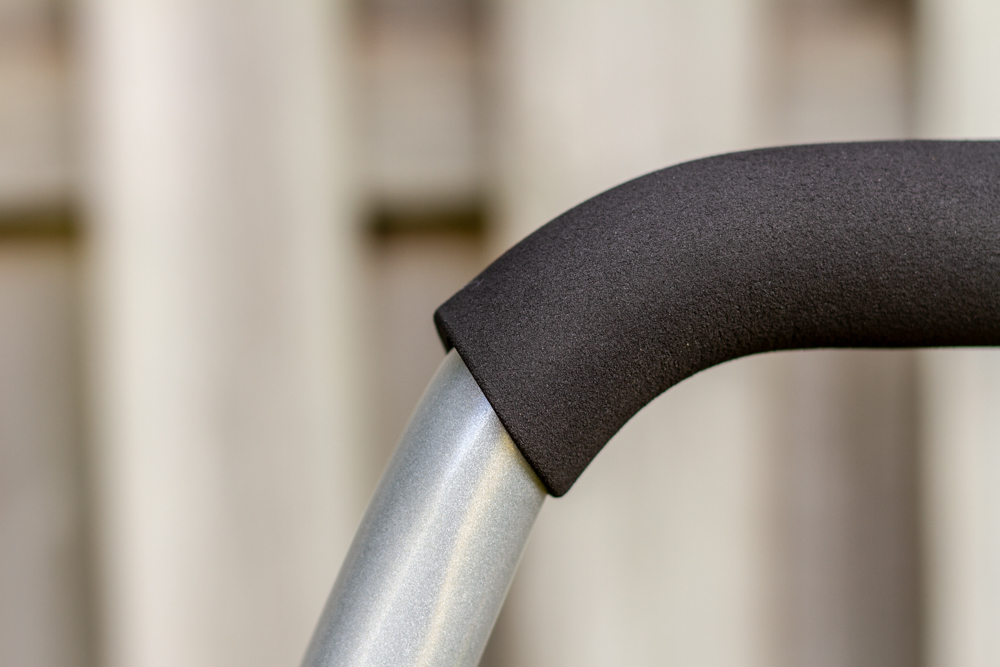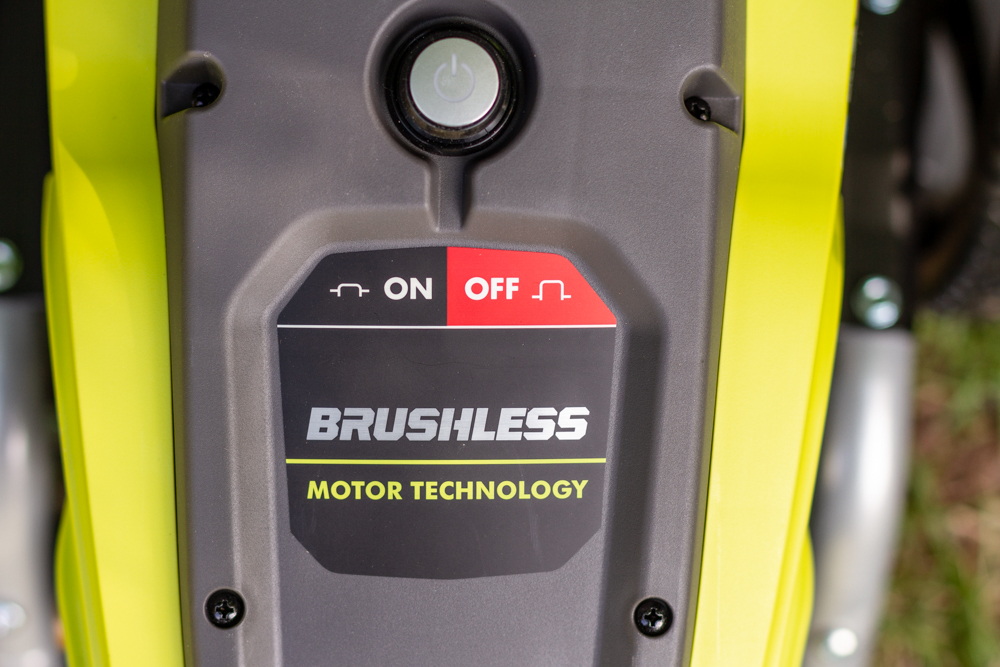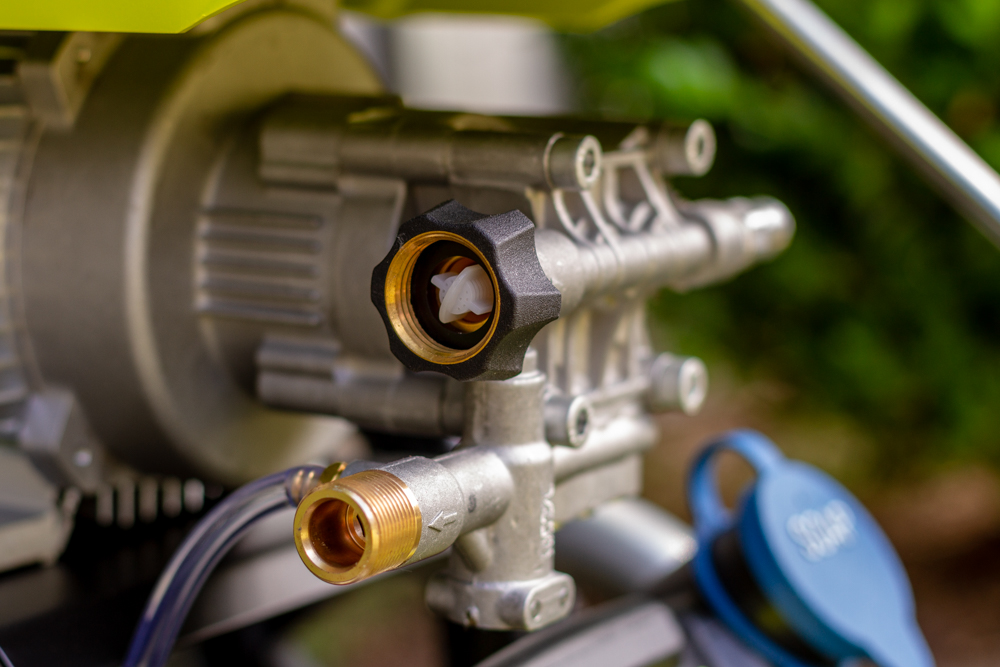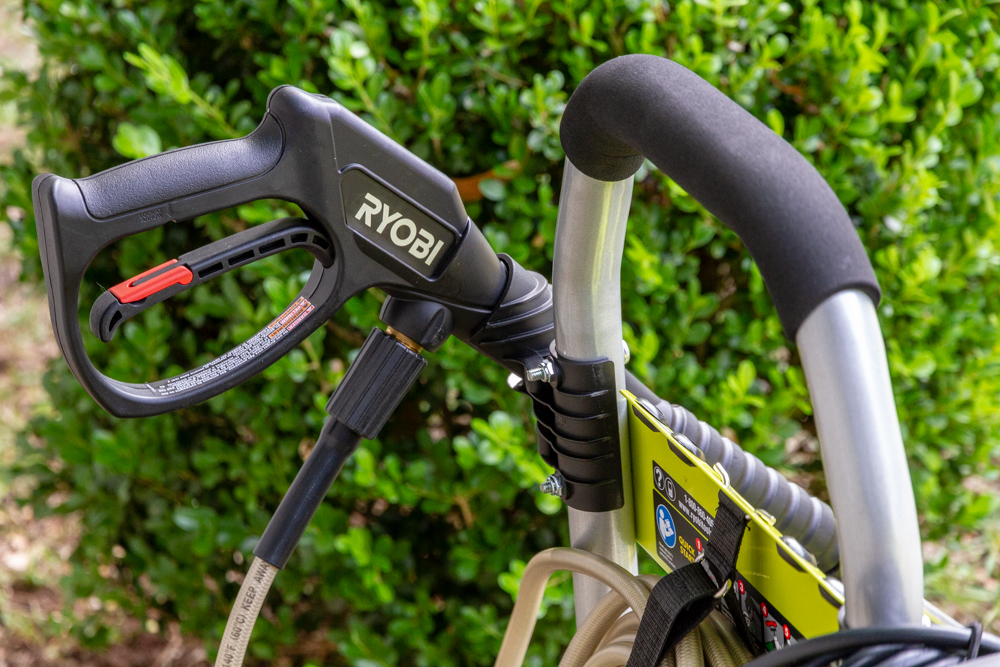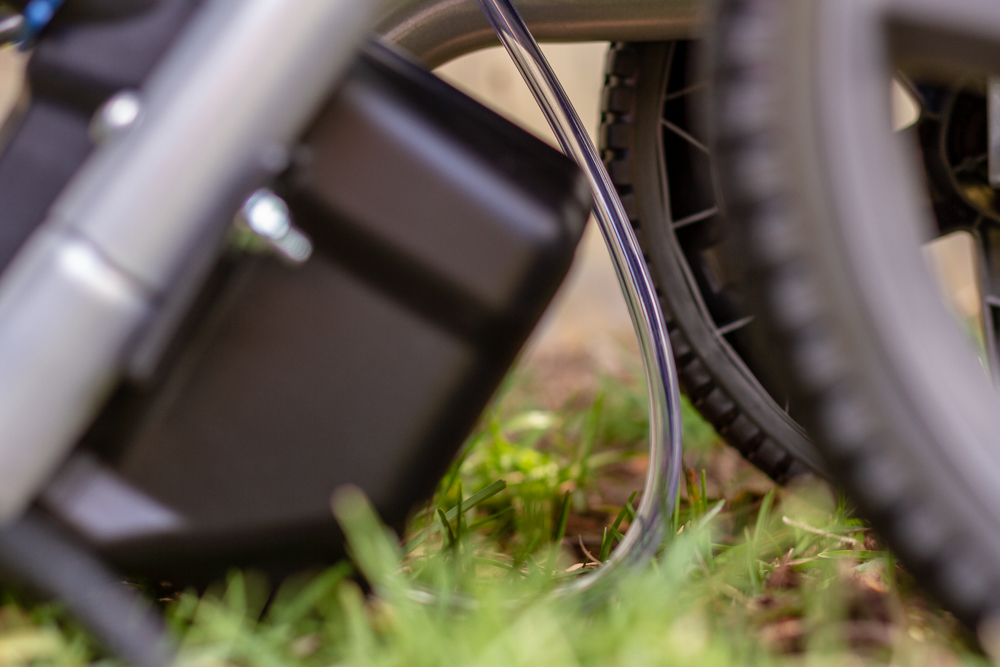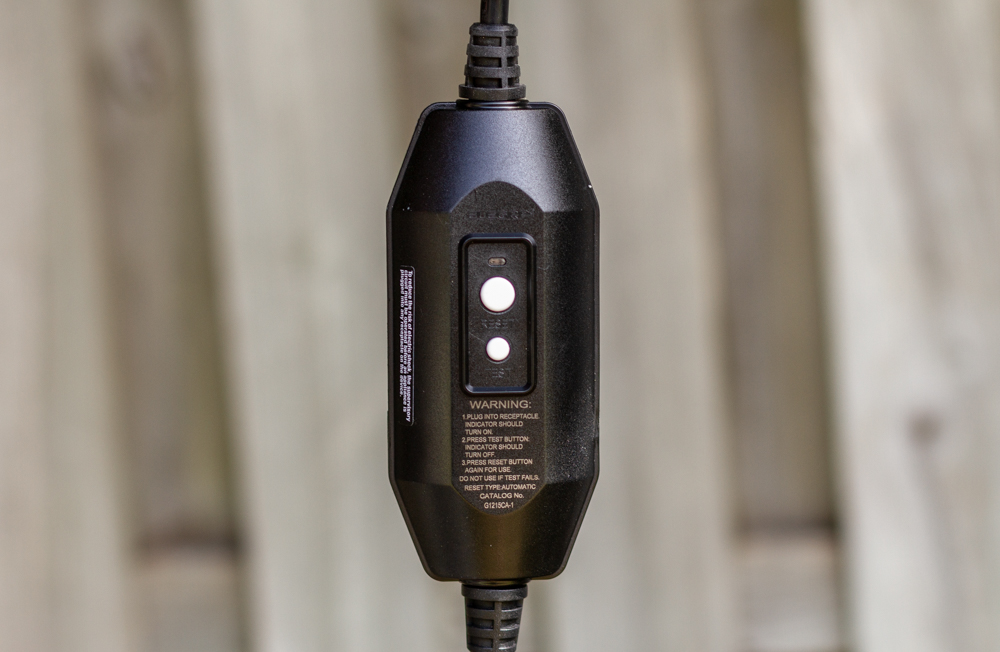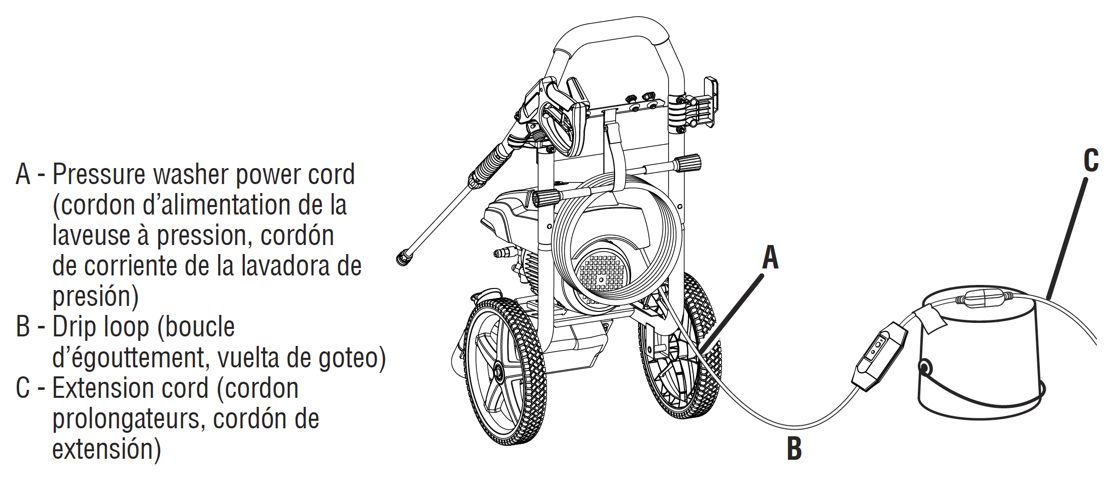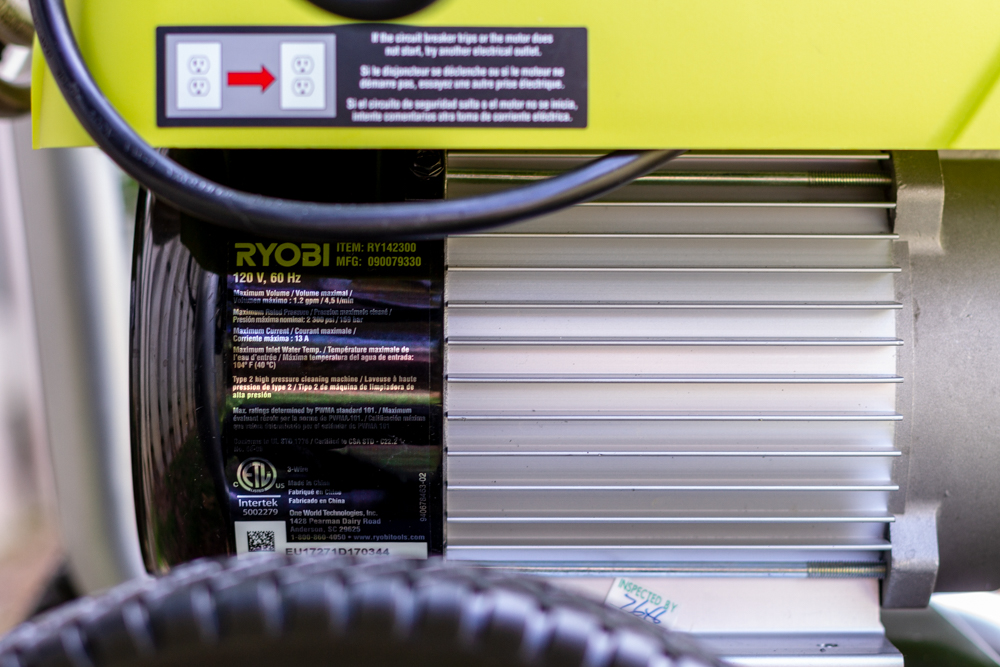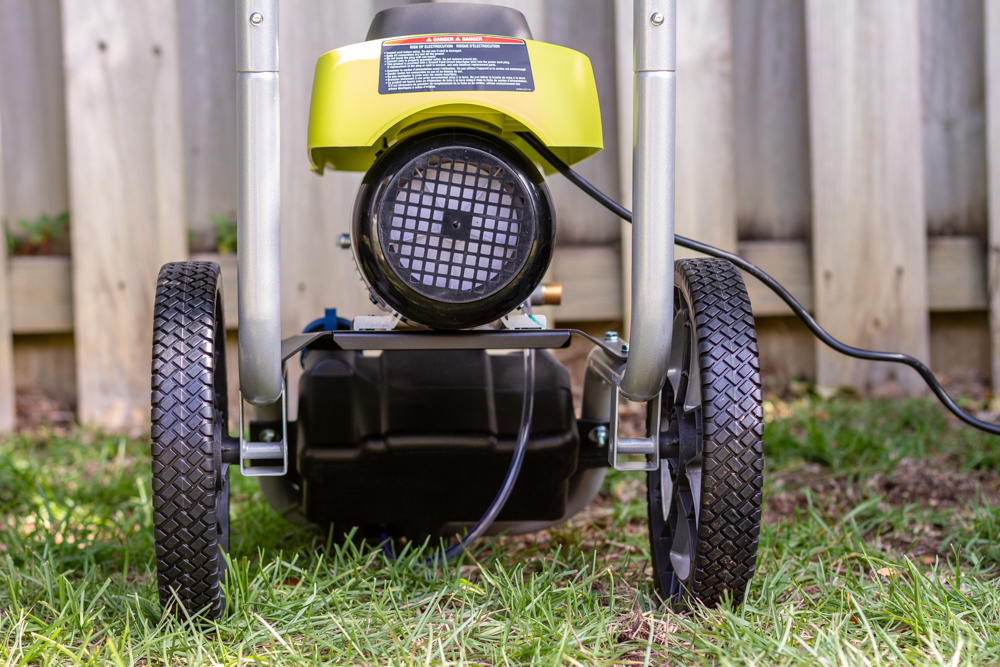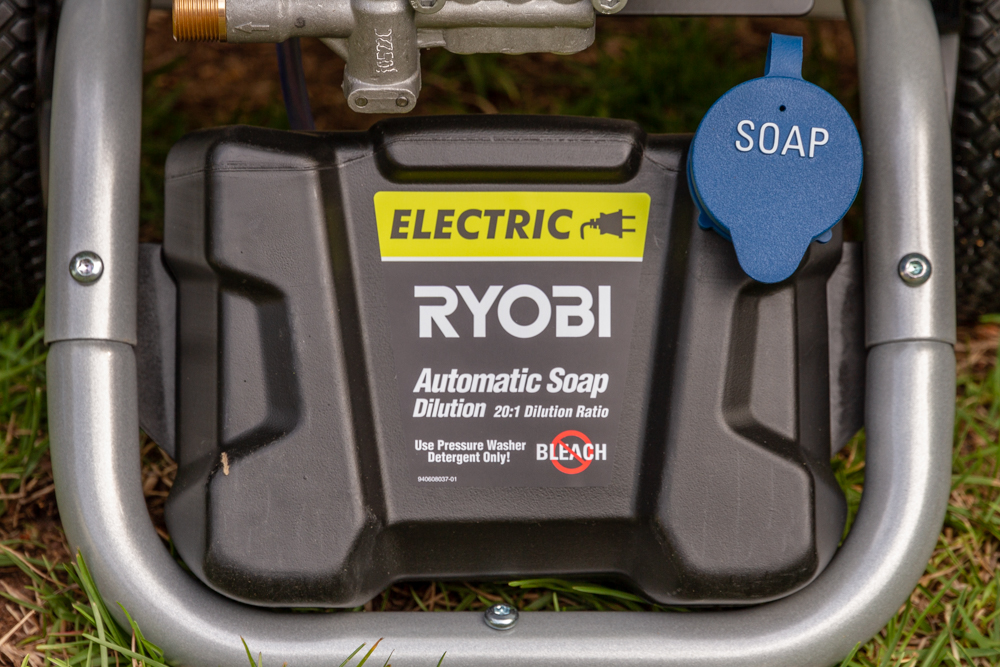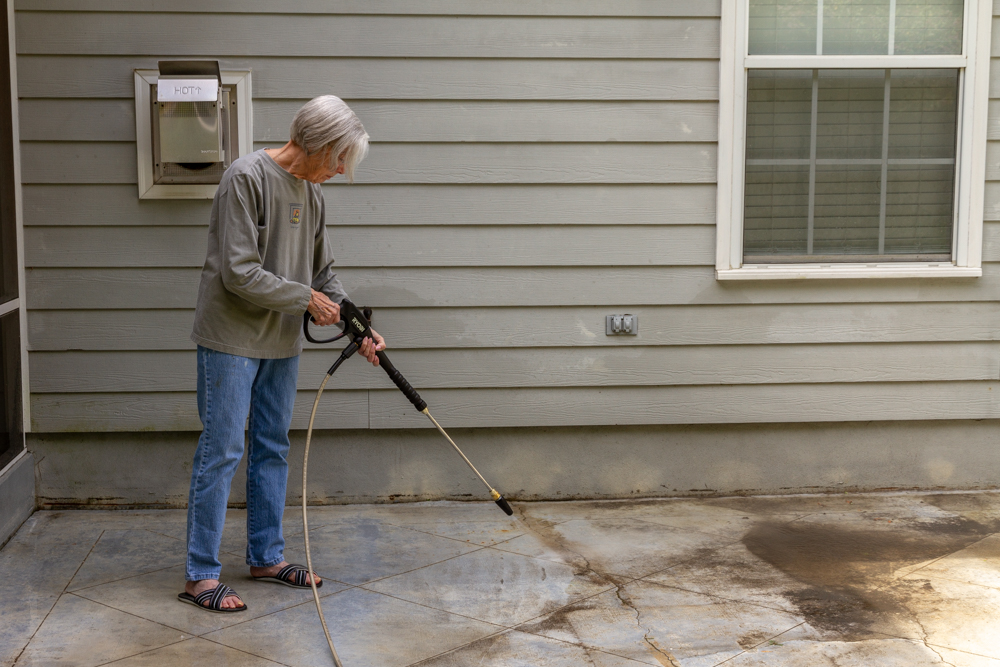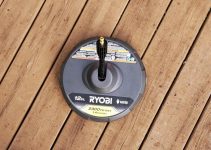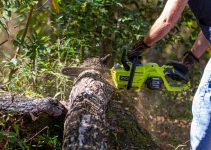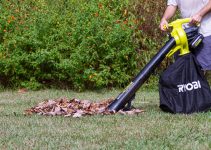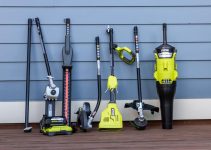Just in time for Mother’s Day, I needed to tackle a few chores around my own mother’s house. One of those jobs included the long-overdue pressure washing of her back patio—it was full of dirt, mold, and grime.????
I’ve got a few pressure washers—both my own and those from various GarageSpot.com projects—and wanted to use a machine that my mother could manage for other projects since she actually enjoys working around the house (she’s 74 and still goes to work almost every day, helping my sister to run her local store—she’s a trooper!).
I chose the RYOBI 2300 PSI Brushless Electric Pressure Washer (Model RY142300) because it’s plenty powerful, yet seemingly easy to manage. After decades of using gas-powered equipment, I am all about moving towards electric and battery-powered tools—they’re just quieter, much less stinky and messy, and far more manageable.
While the RYOBI 2300 pressure washer isn’t quite as powerful as some gas models—which tend to have higher PSI ratings—for almost any job around the house, it does just fine. In fact, RYOBI’s new Turbo Nozzle can strip paint and even flake cement, if you’re not careful!
Table of Contents
Packaging & Assembly
I didn’t document an “unboxing” of this unit because I’d already unpacked it so it would fit in the vehicle we were driving when we picked it up. I will say that it was packed OK, but not nearly as neatly as other pressure washers we’ve used in the past. That said, there wasn’t any dreaded Styrofoam either.
Assembly was a breeze and required zero tools—attach the hand-truck style handle to the frame by simply pushing it down until the little metal buttons click, screw the wand extension and snap one of the nozzles in place, connect the pressure hose (one to the wand, the other to the machine/pump itself), remove the various informational/warning tags, and you’re in business. Everything else is already pre-assembled, including the wheels and all of the accessory storage brackets. Easy peasy.
Accessories
The pressure washer comes with three quick-connect nozzles, but you can certainly purchase aftermarket accessories, too. The 15° standard fan-style nozzle is the one you’ll likely use for most common tasks—like spraying down the deck, siding or truck. The “Turbo Nozzle” is designed for use on concrete or masonry and produces an abrasive circular stream that, as mentioned earlier, can actually strip paint or chip concrete, if you’re not careful and get too close to the surface with the nozzle (always protect your eyeballs, kids!).
Design & Build Quality
RYOBI added some smart features to their 2300 PSI electric pressure washer, including handy hangers for the wand, the pressure hose, and the power cord. Even the three included nozzles have a home, with four rubber-grommeted holes integrated into the upper crossbar.
While the power cord can be secured to its hanger with a built-in bungee-ball-style strap, and the pressure hose secured for storage via an adjustable built-in velcro strap, the wand is a bit less intuitive and kinda wobbly once placed in its holder.
I mean, I’m not a dummy (depending on who you ask), but it did take me a little longer than it should have to figure out that to get the wand into its storage cradle, you have to angle it just right. It just felt more natural to sort of “holster” the wand from above versus the odd angle required to get it in there. Not a big deal and I get that gravity plays a role here… just sayin’.
Like we’ve come to expect from RYOBI, the build quality of this pressure washer is solid. The metal frame is strong, the oversized 12″ all-terrain wheels are capable, and the rest of the housing is sturdy. The big on/off push-button provides great tactile feedback and is sealed for protection against overspray.
The included wand is actually the same one used on some of RYOBI’s gas-powered pressure washers and is rated up to 3300 PSI. It’s also metal, not plastic. The wand handle does have a safety lock, preventing accidental or negligent activation, but the trigger does not lock “on,” which a few reviewers have said caused fatigue during prolonged use. We used the machine for five hours on and off (mostly on) and never felt any discomfort—but that’s just us.
On the other end of the wand, the included 25′ pressure hose is plenty strong enough given the capability of the machine itself. The hose is lightweight, which is one of the strengths of this unit as a whole, and it won’t mar the various surfaces you’re cleaning. Since it is a standard M22 connection, though, you can replace the hose if you wanted something more substantial for whatever reason.
There is one minor design flaw (for lack of a better word) that I would fix: the integrated plastic soap dispenser (more on that in a sec.) has a clear, plastic hose that hangs down underneath the machine. We saw that thing bouncing off of sticks and whatnot as we moved the pressure washer around the yard. I could see either the bottom of that hose wearing down over time or it getting hung-up on something. Mind you, it would take some doing, but it definitely hangs low.
Mobility
Weighing in at about 50lbs fully assembled, the RYOBI 2300 isn’t something my mother can pick up and load into the back of her pick-up truck (okay, she drives a sporty new Honda Civic, but you get the point). But the way the machine is designed—with its oversized wheels, hand-truck style metal frame, and lightweight everything else, it is extremely mobile. We drug this thing all over the yard, through some decorative rocks, mud puddles, over curbs and steps, etc. and it was never a struggle to move around.
Again, the 25′ pressure hose is plenty long enough to park the machine and just use it within that same 25′ radius. And the 35′ power cord is OK but a 50′ cord would’ve been ideal to use with standard 50′ garden hoses (assuming most homes have an electrical outlet at least somewhat close to a water spigot). In other words, the machine can reach as far as its shortest cord or hose, plus the reach of the wand itself.
Speaking of cords, the integrated power cord also includes an inline GFCI (ground-fault circuit interrupter) with both test and reset buttons, as you’d expect. This GFCI is at the end of the cord—where you plug the machine into an electrical outlet—which means there are only a few inches of cord between the GFCI and the plug. We believe it is designed this way to ensure that GFCI housing stays off the ground and out of the water. That’s a good design and we actually have an older pressure washer that has a GFCI in the middle of the cord—which is just silly.
RYOBI does state that you shouldn’t use an extension cord with this pressure washer and, if you choose to, they offer a recommended setup in the manual for keeping the GFCI and cord connections dry.
Performance
At 2300 PSI and 1.2 GPM, the RYOBI brushless electric pressure washer can tackle just about any cleaning job you’ve got around the home. The 13-Amp brushless motor is relatively quiet and remains in standby mode (but not silent mode) until the wand trigger is pulled, which provides instant pressure with zero lag. And that pressure is a constant 2300 PSI—it is not adjustable, which is fine with us. RYOBI does offer an inline pressure adjustment accessory, but we didn’t have one to test.
Cleaning my mother’s ~16′ x 8′ concrete patio was a pretty good test for this machine because it was so filthy (sorry, Ma, it’s true and I should’ve cleaned it sooner!). With the Turbo Nozzle attached for most of the job, we were able to knock it out within a few hours and with a few breaks—you know, for review photos and whatnot. This time also included a light washing of the siding on the back of her house using the 15° nozzle.
Below is a before and after photo. I tried to align the pictures correctly and the light did change a little as we worked. In-person it looks SO much better, despite some repairs that need to be done to the patio.
I will say that we only used the integrated one-gallon soap dispenser applicator once and only for a few minutes. We didn’t really love it or have a need for it, given the projects we were tackling. But I’ve never really found myself using integrated soap dispensers very often with pressure washers anyway. I much prefer [amazon link”B0792TYFR1″ title=”a good inline foam cannon” /] or similar accessory for applying concentrated soaps and detergents.
Although by design, the soap dispenser on the RYOBI 2300 is a bit weak, which is why I prefer to call it a soap “applicator”—it applies soap to a surface where it can then set for a few minutes before pressure washing the same surface. It dilutes at a non-adjustable 20:1 ratio, so you’ll need to use the appropriate concentrated detergent designed for use in pressure washers. RYOBI also says to use the included low-pressure “blue nozzle” when using the soap dispenser.
See Also: 7 Best Pressure Washers for Car Cleaning
Final Thoughts
There are a ton of pressure washers out there. The RYOBI 2300 PSI Brushless Electric Pressure Washer (Model RY142300), however, is more powerful than most electric and even some gas pressure washers on the market today. For the typical homeowner, it’s got plenty of power to clean driveways, decks, patios, outdoor furniture, siding, rooftops (be careful!), cars, trucks, tractors, trailers, boats, RVs… you get it. It’s also extremely mobile with its big 12″ wheels, and all of the integrated cord/hose/accessory storage features keep things nice and neat.
With a three-year warranty (at the time of this post), it’s also a relatively affordable option and, we think, worth the investment given its build quality and performance. A few minor issues may cost it a half-star, but don’t let that stop you from considering this pressure washer—especially if you’re moving from gas to electric—RYOBI is a great choice. Even Mom can handle it!
Rating Criteria
Design
Mobility
Build Quality
Performance
Features
Value
Overall Rating
A great all-around pressure washer for around the home—plenty of power, super-easy to manage, and affordable to boot.


